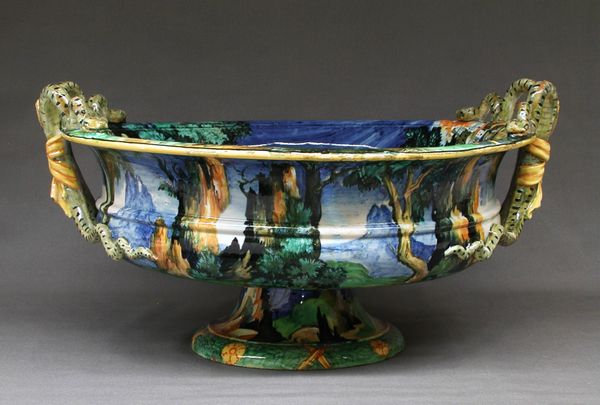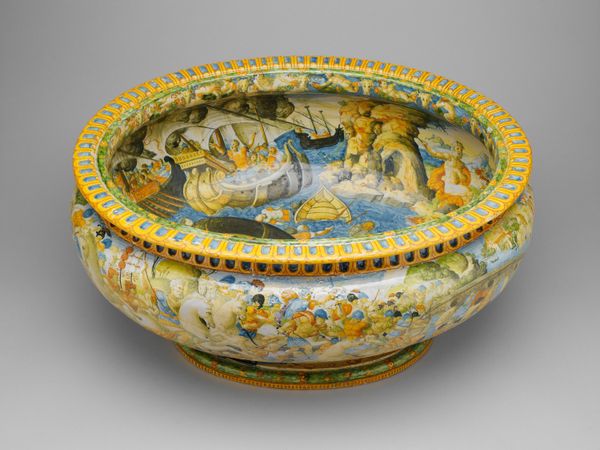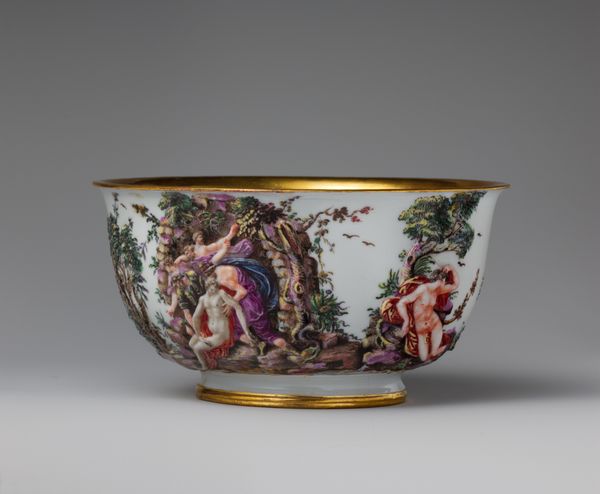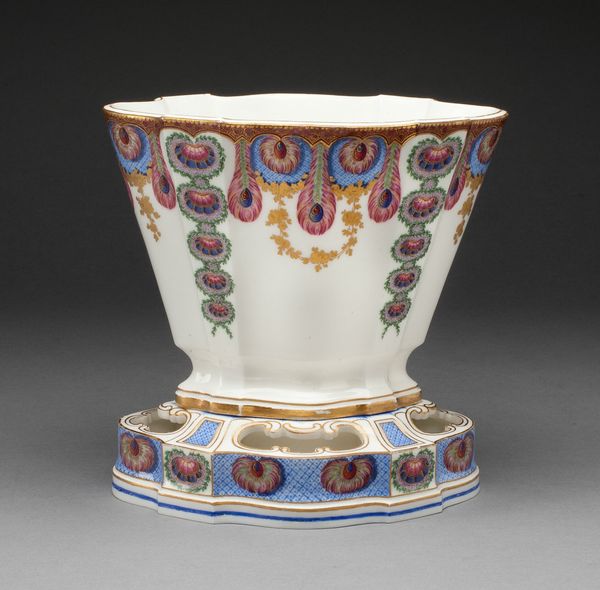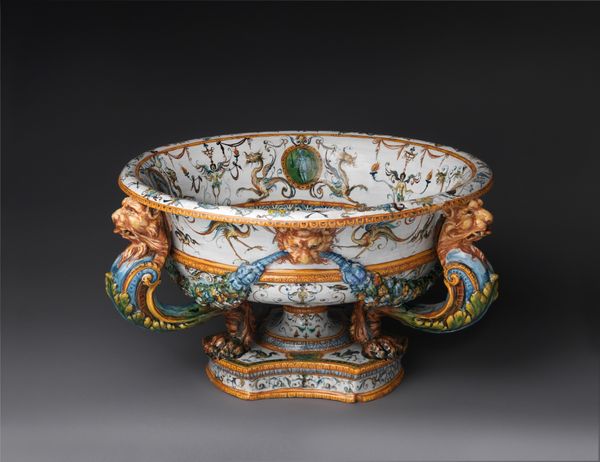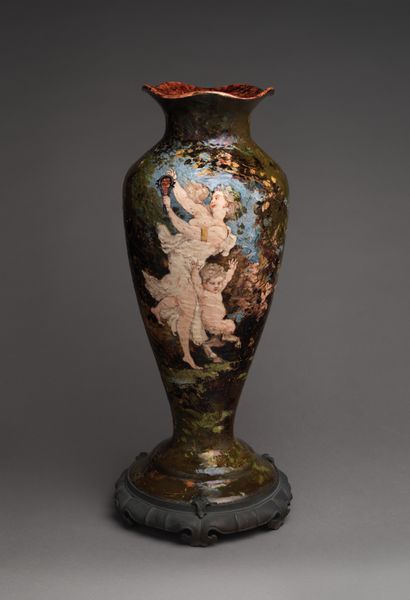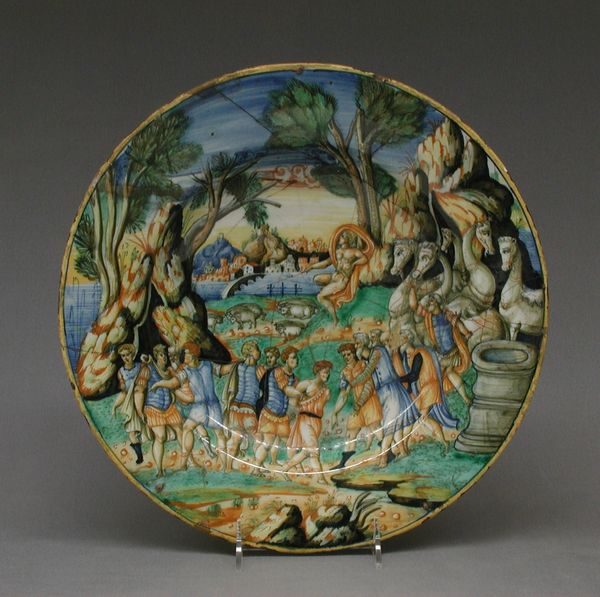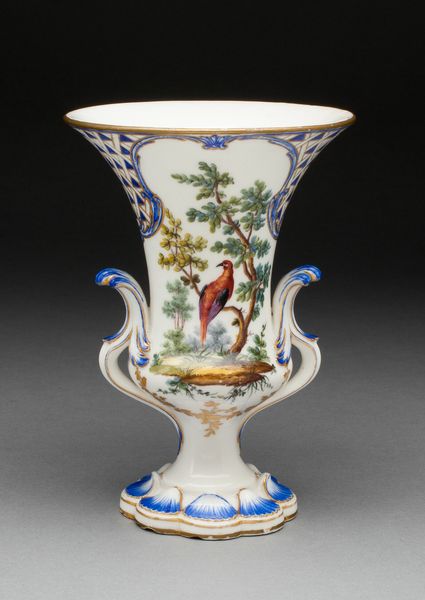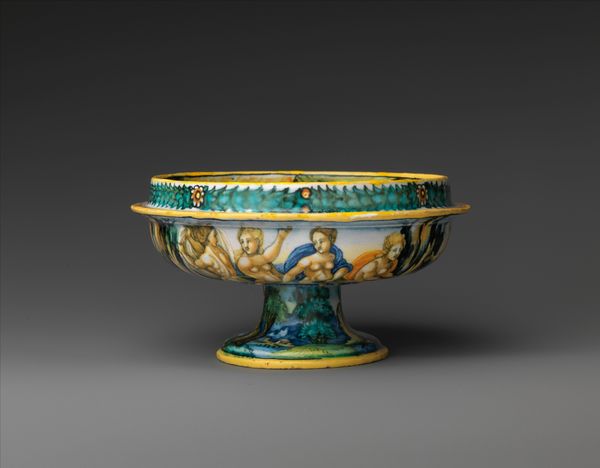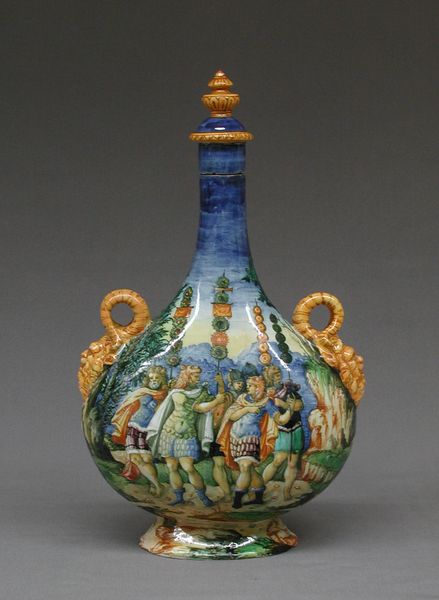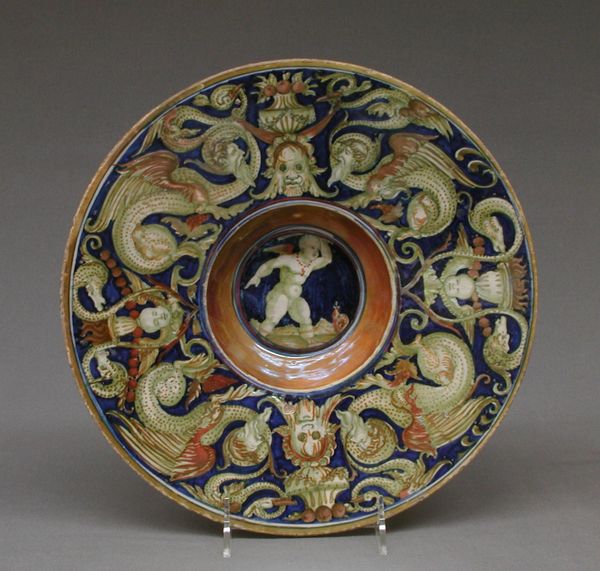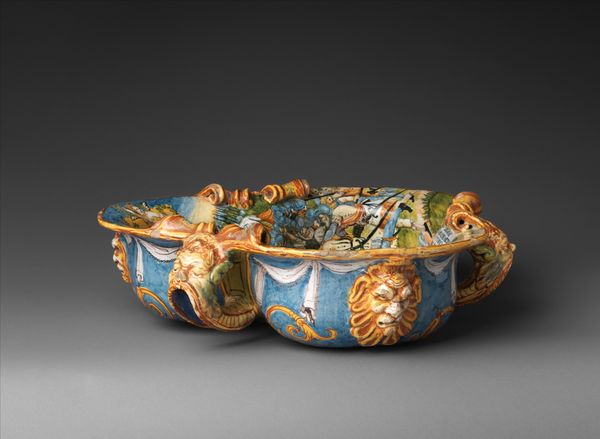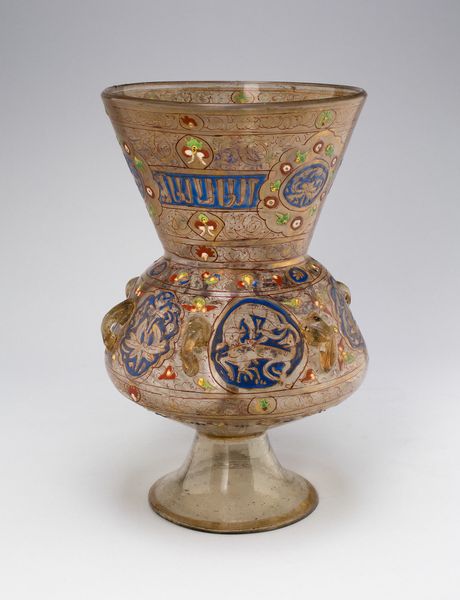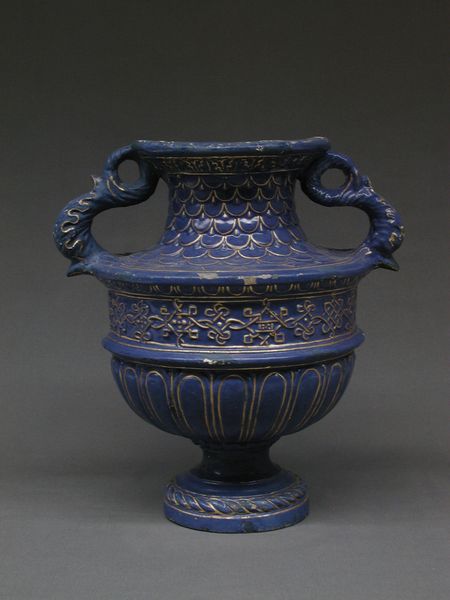
ceramic, sculpture
#
landscape
#
ceramic
#
mannerism
#
figuration
#
sculpture
#
ceramic
#
men
#
history-painting
#
decorative-art
#
italian-renaissance
#
male-nude
Dimensions: Overall (confirmed): 9 3/4 × 19 1/2 × 15 3/4 in. (24.8 × 49.5 × 40 cm)
Copyright: Public Domain
This is a ceramic cistern, made by Marcantonio Raimondi during the Italian Renaissance. Immediately, the serpent-shaped handles catch the eye. Since ancient times, snakes have carried a dual symbolism, representing both healing and deadly poison. This duality can be traced back to the rod of Asclepius, the Greek god of medicine, where a single snake entwines a staff, symbolizing the healing arts. Yet, in other contexts, the serpent embodies chaos, lurking in the shadows. Think of the Garden of Eden, where the serpent tempts Eve, leading to mankind's expulsion. These conflicting interpretations create a powerful tension, reflecting our complex relationship with nature and the subconscious. The serpent, then, is not merely a decorative element but a potent symbol, deeply embedded in our collective memory, reminding us of the perpetual dance between creation and destruction. It's a motif that continues to slither through art history, constantly reinventing itself.
Comments
No comments
Be the first to comment and join the conversation on the ultimate creative platform.
